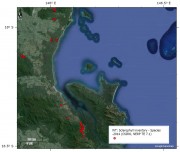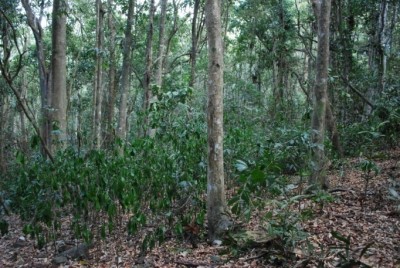NERP TE Project 7.1 - Fire and Rainforests (CSIRO)
Project summary
Little is known about the impacts of fire on rainforest vegetation or the animals which depend on it. Fire can control vegetation regrowth after cyclones and help regeneration of eucalypt species, but it may also be important in determining succession in drier rainforest types. Fire also poses a threat to animals relying on forest canopy habitat or sheltering in fallen timber. This project will investigate the positive and negative impacts of fire on rainforest vegetation and wildlife.
Why this research is needed
The information generated by this project will help in developing management strategies that consider the environmental impacts of fire on the rainforest in the Wet Tropics. Particularly, it will provide an evidence-base to underpin policy in relation to managing fire on the margins of rainforest.
Research-user focus
The project will deliver outcomes that are useful to a range of stakeholder organisations including local and state government bodies and conservation planners and managers. Research-user organisations include the Department of Sustainability, Environment, Water, Population and Communities, the Wet Tropics Management Authority, Terrain NRM and the Cassowary Coast Regional Council.
Outcomes
- The project will provide new data about the problems posed and solutions offered by fire. This information will underpin future policy advice and rainforest management approaches. Specific outputs will include:
- Initial assessment and potential long-term monitoring of impacts of Tropical Cyclone Yasion mahogany glider habitat, levels of rainforest invasion, and impacts of fire on new vegetation.
- Mapping, assessment of areas of greatest concern, and understanding of impacts of fire on littoral rainforest and coastal vine thickets of eastern Australia; and advice on management.
- Assessment of the likelihood of fire and its impacts on threatened Mabirain forest.
- Identification of key criteria to be used in assessing where and whether expansion of rainforest is desirable, together with mapping and assessment of where critical impacts of fire may occur.
Reports, Publications and News
For more information see Project 7.1 'Fire and rainforests' on the NERP Tropical Ecosystems Hub site.
Images
Datasets

This dataset consists of 31 monitoring sites in the Tully-Ingham area. Sites have various levels of rainforest invasion. Each site has a vegetation strata species list and counts of each species in each strata. Trees with stems > 10cm Diameter Breast Height (DBH) are identified and their DBH and height are measured. Date of survey May-July 2014.
Little is known about the impacts of fire on rainforest vegetation or the animals which depend on it. This project will investigate the positive and negative impacts of fire on rainforest vegetation and wildlife. In collaboration with NPRSR rangers, and where possible with local NGOs and Indigenous Rangers, we propose to establish vegetation and faunal monitoring sites across the rainforest/woodland boundaries and associated vegetation types in key areas of the Mission Beach, Tully lowlands and Hinchinbrook Channel areas to assess faunal and floral status and trends.








